Capital Region Greenhouse Gas Inventory
The Pilot began by undertaking a Greenhouse Gas (GHG) Emissions Inventory of the Region. The inventory computes regional direct and indirect emissions and apportions them to all 126 cities, towns, villages, and counties in the region. In order to standardize GHG emissions inventories across pilot regions in NY State, the pilot team participated with other Pilot regions in conference calls and exchanged ideas and information to reach consensus on the appropriate GHG protocol to utilize. The GHG inventory also entailed meetings, coordination and the collection of data from key partners, which include the region's utilities, National Grid, Green Island Power Authority, Central Hudson Gas and Electric, and NYS Electric and Gas; the Capital District Transportation Committee (CDTC); the regionís Metropolitan Planning Organization; Cornell Cooperative Extension; NYSDOT; NYSERDA; NYSDEC; the Energy Information Administration (EIA); and other data sources.
Highlights from the GHG Inventory
In 2010, the Capital District emitted 15,831,238 Metric Tons Carbon Dioxide Equivalent (MTCDE) greenhouse gas (GHG) emissions. Transportation fuels accounts for 40%, followed by energy consumption in the residential (17%), commercial (14%), and industrial (15%) sectors. Fugitive emissions contribute 12%, defined in the figures as the sum of industrial process, product use, and transmission/distribution loss emissions. Agriculture and waste sectors are the smallest contributing 2% each.
Across all forms, Capital District residents and business in 2010 spent $4.5 billion on energy of which two thirds ($2.9 billion) was on petroleum-based gasoline, diesel, and fuel oils. The cost of these fuels rose more than others and today the region pays $1.75 billion more per year for petroleum fuels than it did 10 years ago-thatís a rise of $1600 per person (adjusted for inflation). Rural areas with lower incomes and those dependent upon fuel oil have been hit the hardest.
Transportation fuels dominate in all counties and account for 40% of the Capital Districtís GHG emissions. Significant reductions and cost savings may be possible by introducing electric vehicles, alternative fuels, more efficient vehicles, transit, and more walkable, compact development patterns. This is particularly so because Upstate New Yorkís electricity is the least-carbon intensive in the nation and therefore offers a unique opportunity to reduce emissions and save residents money by electrifying on-road transportation. Shifting 20% of on-road gasoline vehicles to electricity would reduce Capital District emissions by 4.5% and save drivers $174 million in fuel costs.
Development patterns in the Capital District influence emissions. Households in compact, employment-accessible areas generate 31% less greenhouse gas emissions and have 39% lower energy costs. Households in some rural towns consume three times more energy than households in some cities. Rising energy prices hit rural areas harder because they have longer commute distances (using gasoline) and rely on fuel oil and propane for heating. Households in some rural communities now spend 15-18% of total income on energy compared to those in urban communities that spend as little as 5-7%.
New York vs. US Grid Electricity Generation Mix
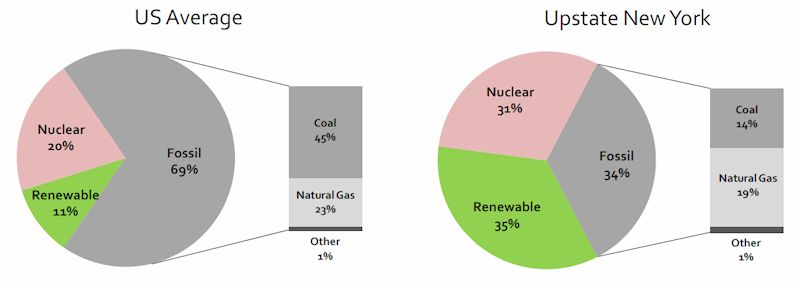
Regional GHG Emissions By Sector and Source
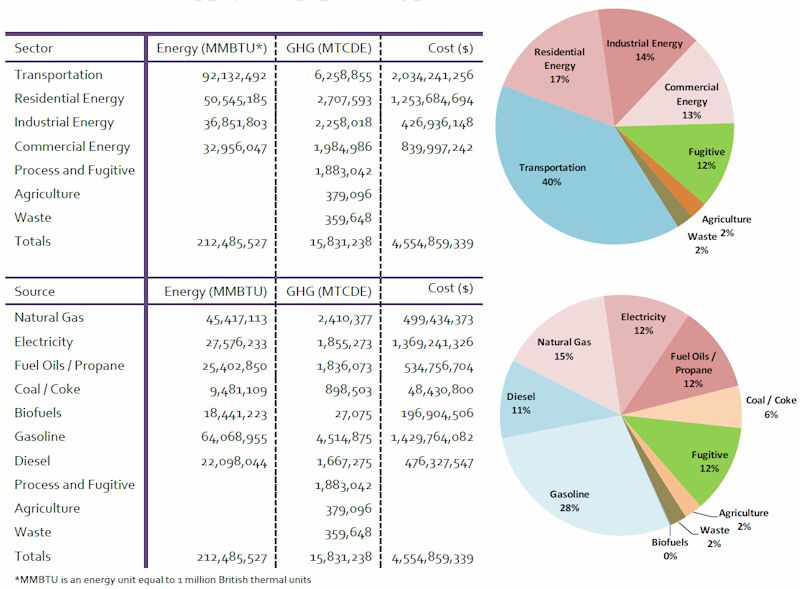
Energy Use by Sector per Capita (MMBTU/person)
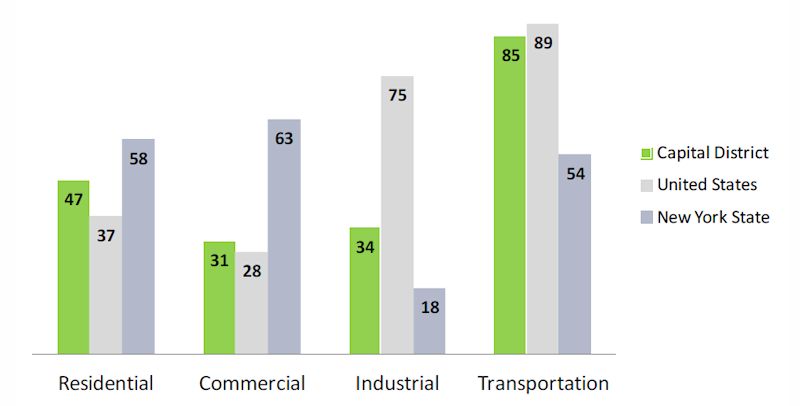
GHG Emissions by County (MTCDE)
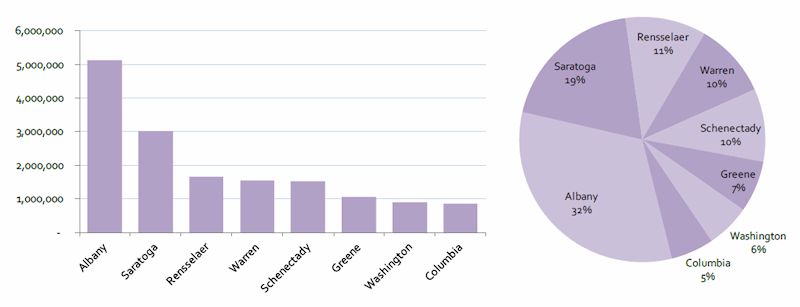
GHG Emissions by County, by Source and Sector (MTCDE)
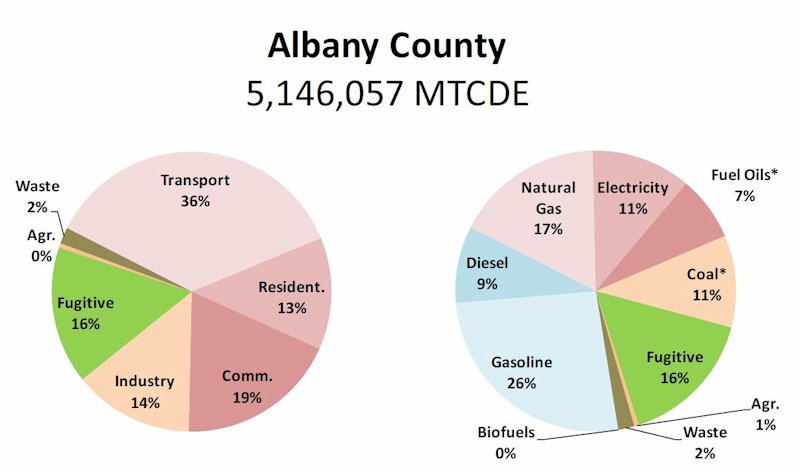
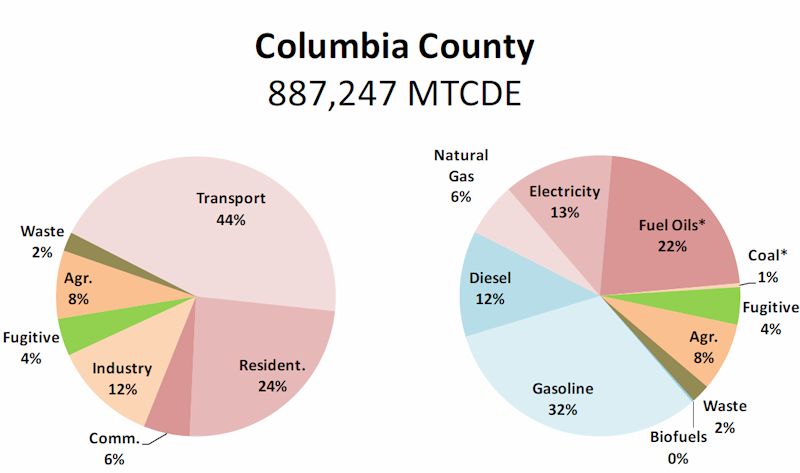
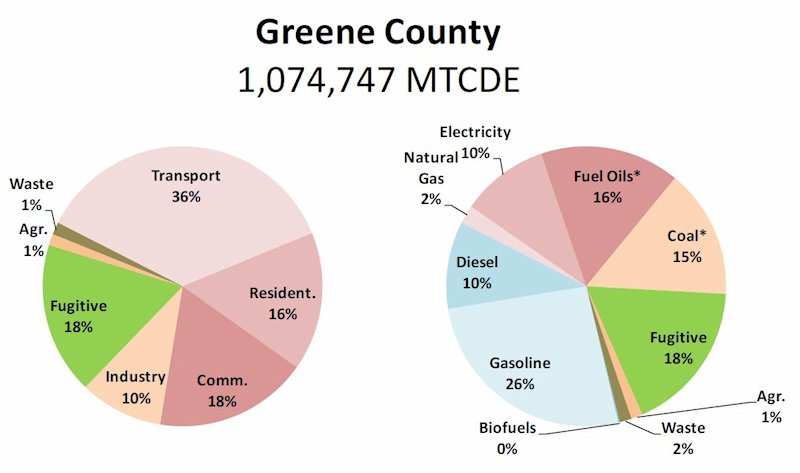
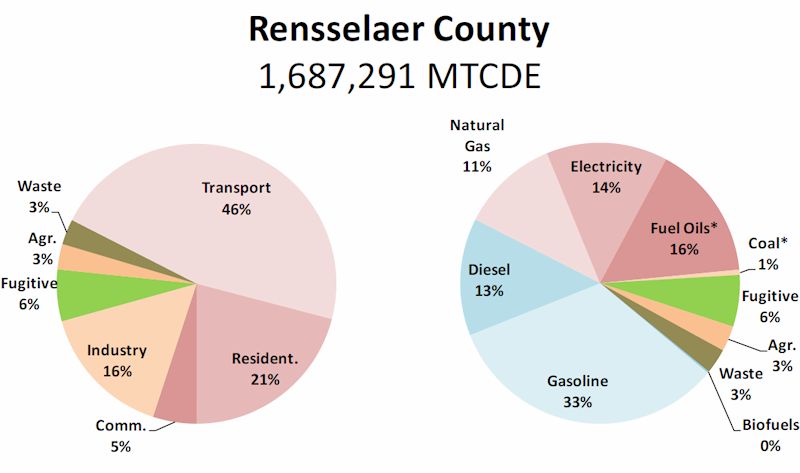
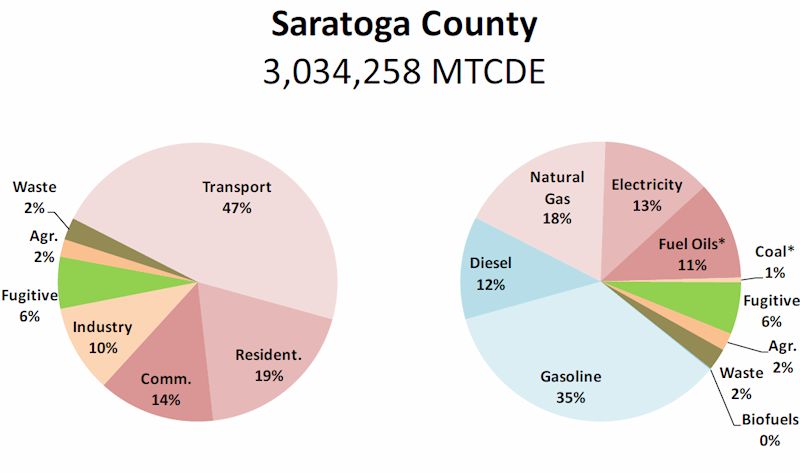
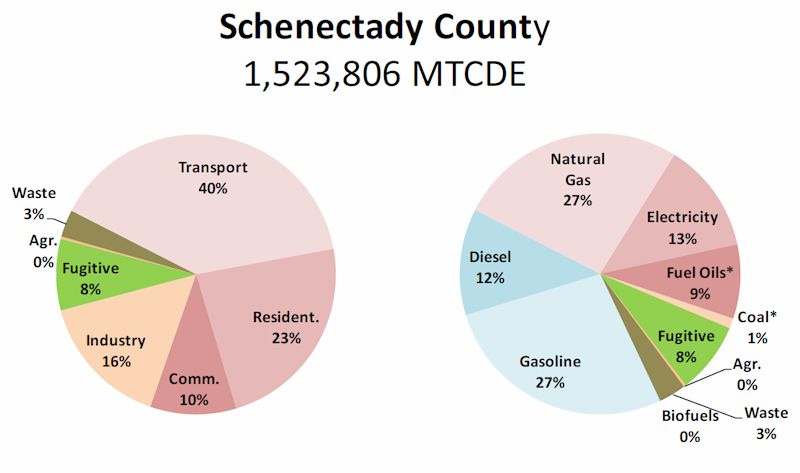
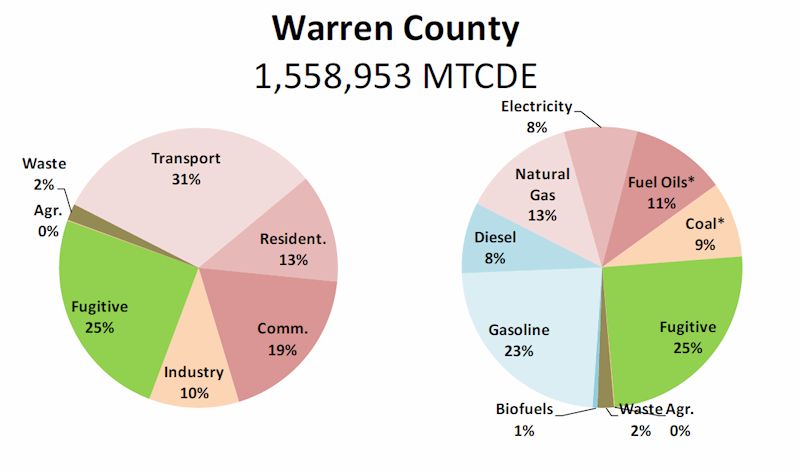

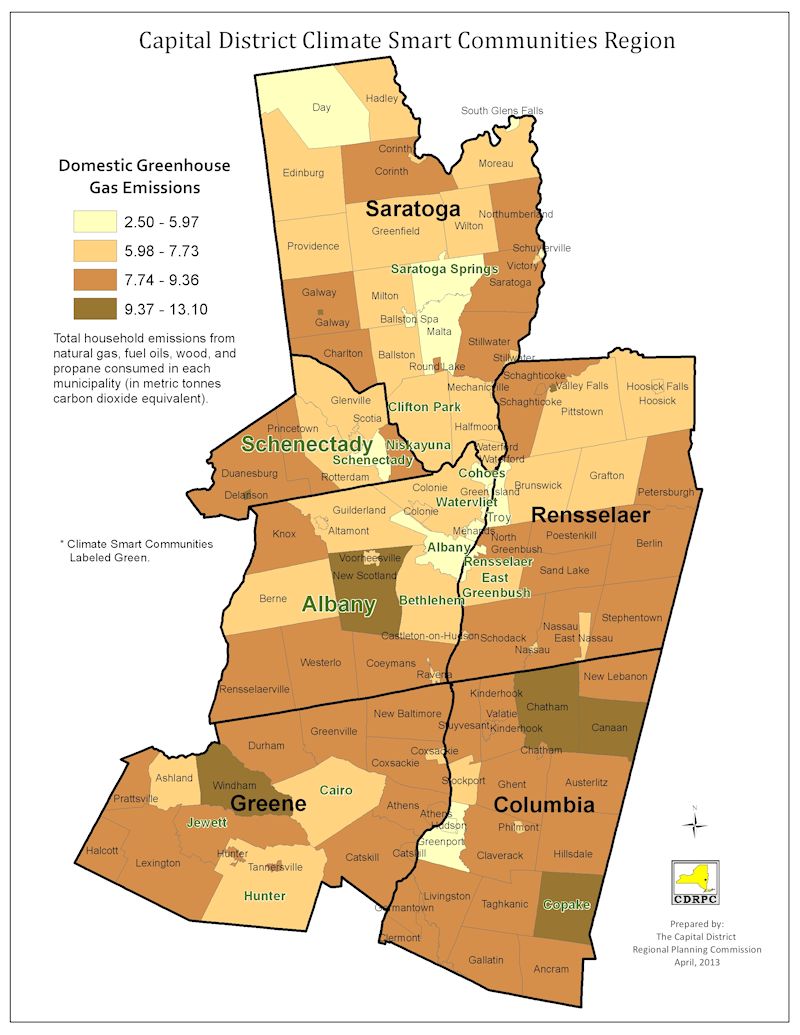
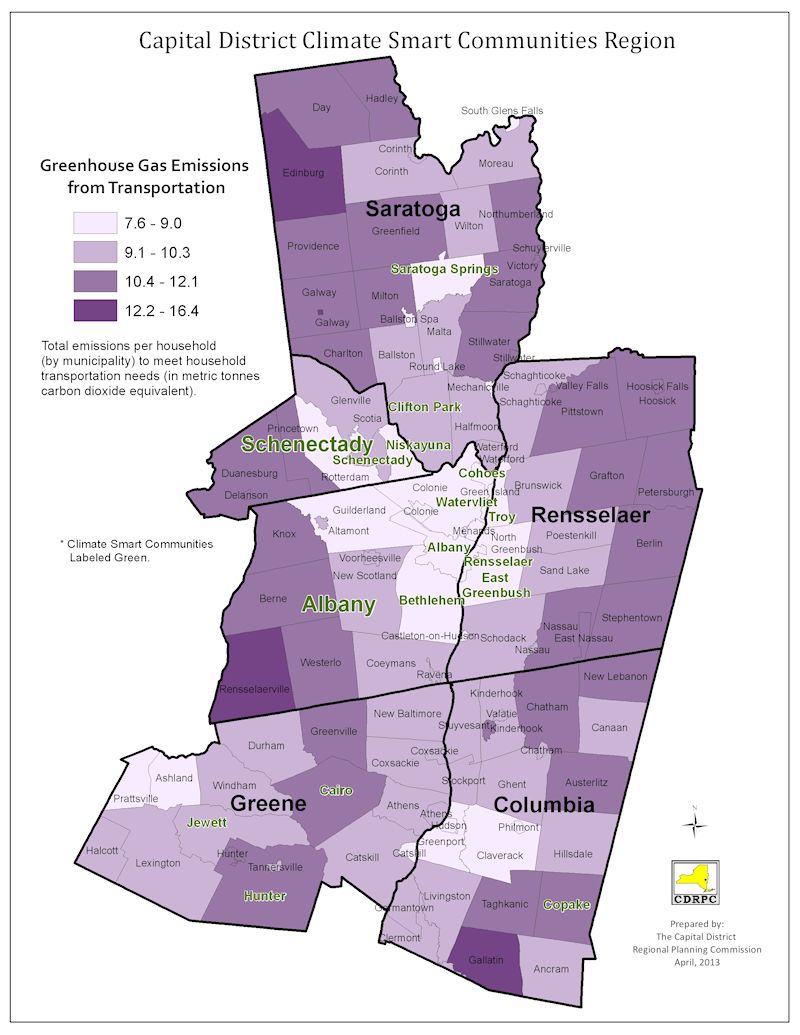
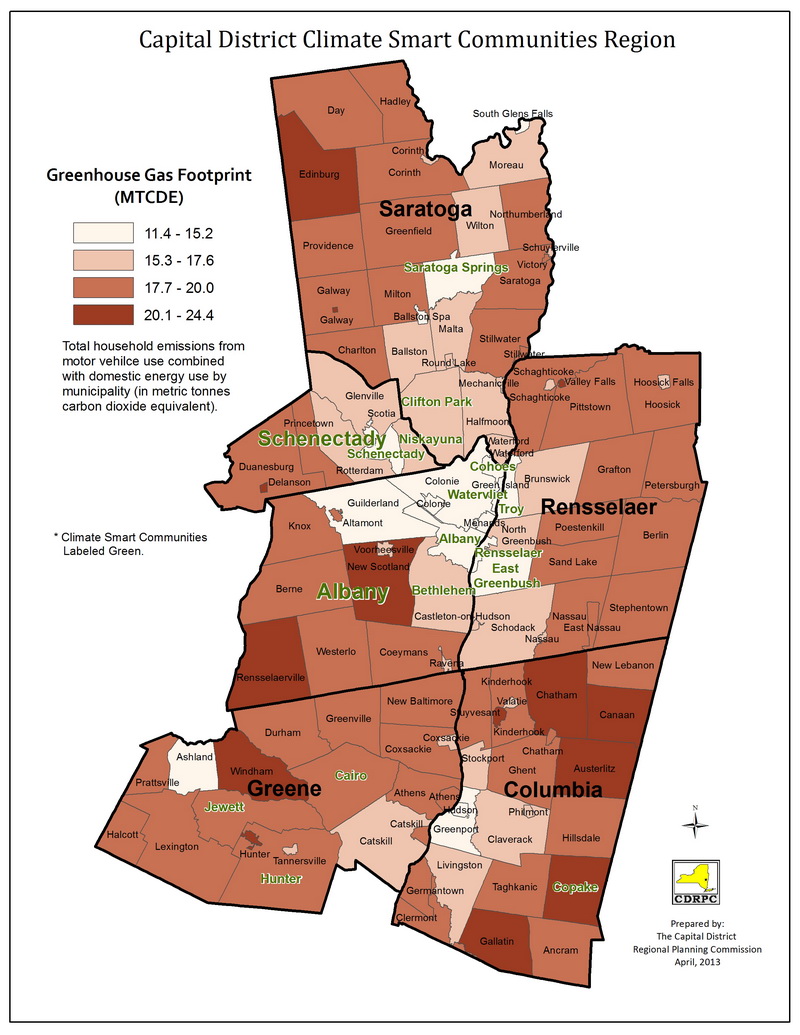
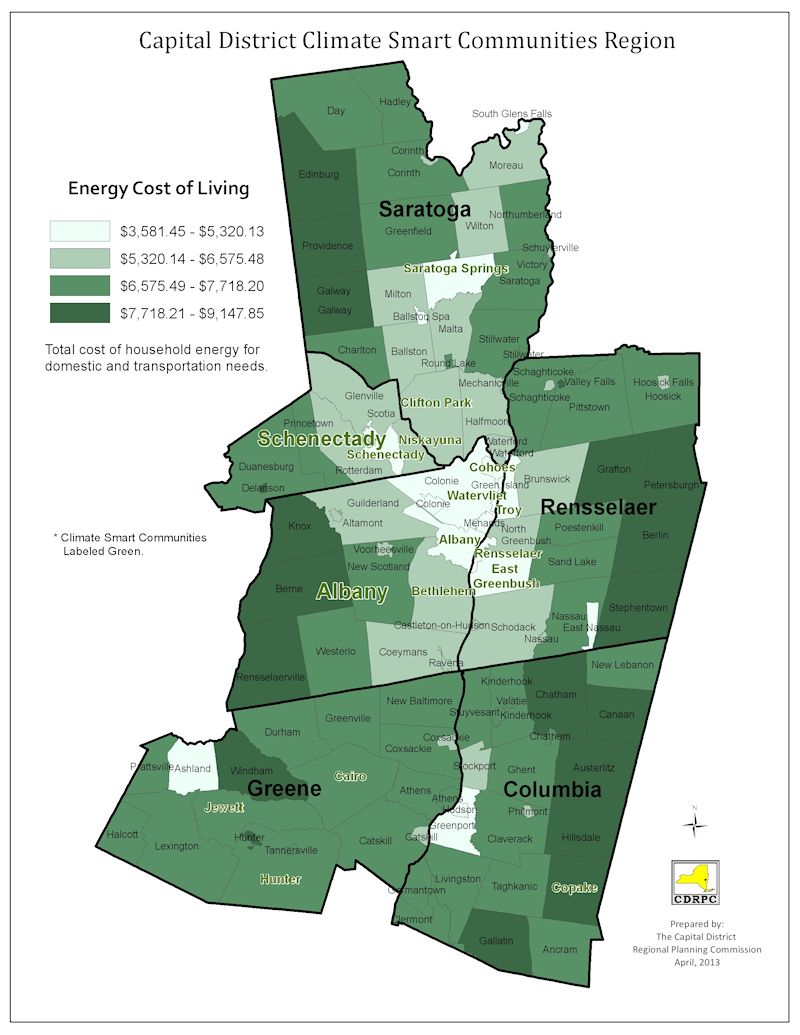
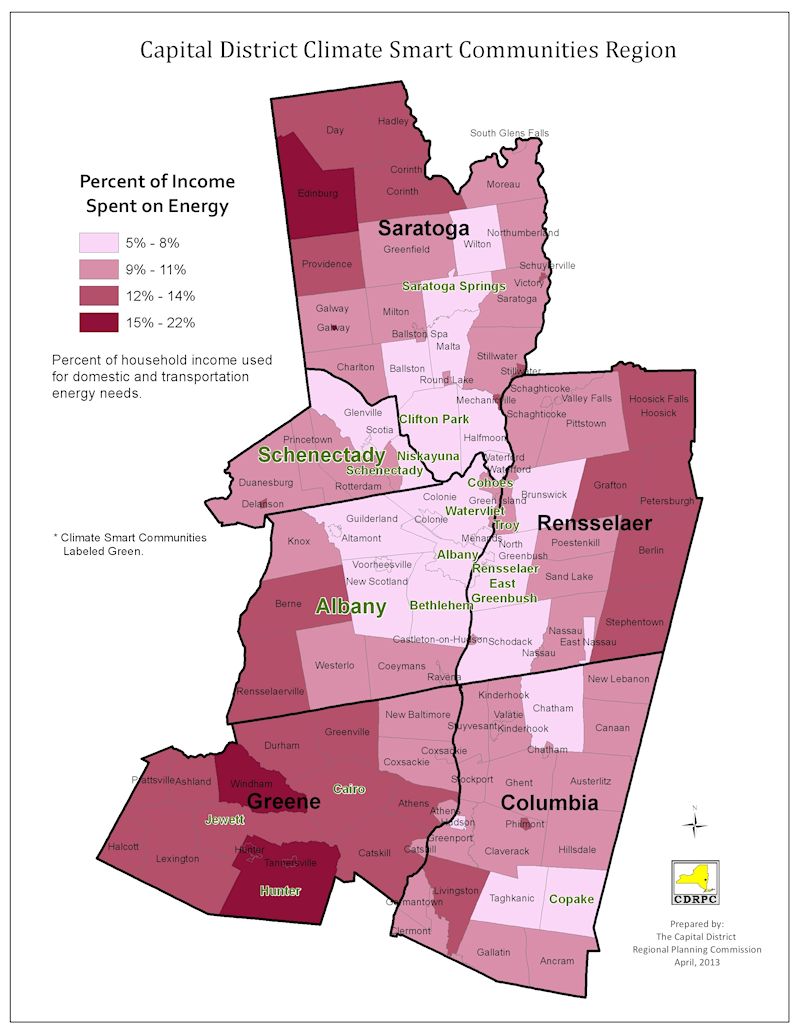
|






 Last Updated: 30 Sep 13
Last Updated: 30 Sep 13 